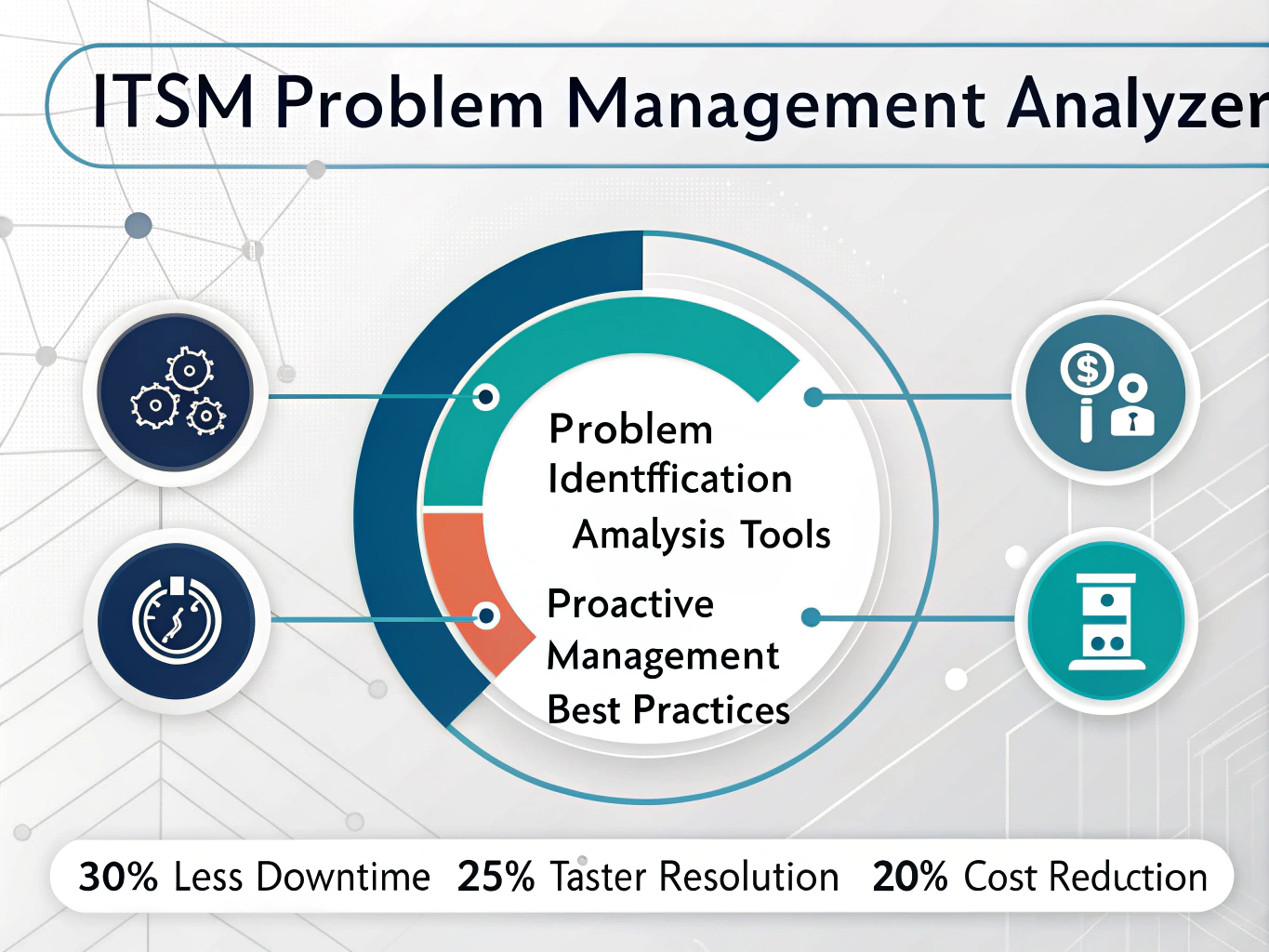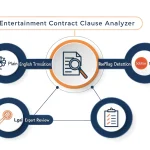ITSM Issue Analysis for Professional Services
Is this tool helpful?
How to Use the ITSM Problem Management Analysis Tool Effectively
Step-by-Step Instructions
Follow these steps to get accurate and useful insights from the ITSM Problem Management Analysis Tool:
- Open the tool: Access the ITSM Problem Management Analysis Tool on your professional services IT platform.
- Understand each input field: Review the form fields carefully to know what information you’ll provide.
- Enter relevant data: Fill out the fields describing common ITSM problems, analysis tools you use, benefits of proactive management, successful strategies, and best practices specific to your organization.
- Optional industry details: Add specific notes about how your particular professional services sector affects ITSM challenges and needs. This helps tailor the analysis.
- Submit the form: Click the button to generate a detailed ITSM problem management analysis based on your inputs.
- Review and use results: Analyze the output provided. Use the insights to improve your ITSM problem management processes.
Sample Inputs
Here are two fresh examples to guide your form entries:
- Example 1: “Our architectural firm faces challenges with frequent software integration issues between design tools and project management platforms. We need stronger coordination to reduce delays in project delivery.”
- Example 2: “As a boutique marketing consultancy, our team relies heavily on cloud-based collaboration tools. We require reliable incident management to prevent downtime during critical campaign launches.”
About the ITSM Problem Management Analysis Tool
What It Does and Why It’s Useful
This analysis tool supports professional services firms in identifying and managing common IT Service Management (ITSM) problems. It focuses on problem management—the process of diagnosing root causes and finding long-term solutions to service interruptions and inefficiencies.
By using your inputs, the tool generates tailored insights that help you improve ITSM workflows, reduce recurring incidents, and promote proactive problem resolution. The result is smoother IT operations and better support for your core business activities.
Key Benefits for Professional Services Firms
- Customized analyses based on your firm’s unique IT challenges and tools
- Identification of root causes behind ITSM issues specific to your industry
- Recommendations on adopting effective problem management methods and software
- Support for shifting from reactive to proactive ITSM strategies
- Best practices that improve problem detection, documentation, and resolution
Practical Applications of the ITSM Problem Management Analysis Tool
How Firms Use This Tool to Improve ITSM
By inputting detailed information about ITSM issues and practices, your firm receives actionable guidance tailored to the professional services environment. Here are common ways to apply the tool’s insights:
- Prioritize ITSM challenges: Understand which problems cause the most disruption and need immediate attention.
- Enhance tool usage: Learn how to better leverage platforms like ServiceNow, Jira, or Power BI for reporting and tracking incidents.
- Adopt proactive management: Implement early warning systems and proactive workflows to prevent problems before they arise.
- Standardize best practices: Use proven strategies to create consistent problem resolution processes across your firm.
- Guide team training: Identify knowledge gaps and develop targeted training to improve IT support capabilities.
Example Scenario
Consider a graphic design agency experiencing frequent network outages and delayed software updates. The tool’s analysis might identify these issues and suggest:
- Common ITSM Problems:
- Intermittent network connectivity during high-demand periods
- Software version mismatches causing file incompatibilities
- Poor documentation on incident resolution steps
- Recommended Analysis Tools:
- Network monitoring systems to assess traffic loads
- Configuration management tools to track software versions
- Centralized incident logging platforms to share resolutions
- Proactive Management Strategies:
- Schedule regular network capacity reviews before major projects
- Automate software update reminders and validation checks
- Create a shared knowledge base for recurring issues and fixes
- Best Practices Suggested:
- Establish an ITSM steering committee with representatives from design and IT teams
- Conduct quarterly training on change and incident management
- Implement real-time alert systems to quickly detect network problems
Advantages of Using This ITSM Problem Management Analysis Tool
1. Improved Identification of ITSM Issues
You’ll spot recurring IT problems more quickly by analyzing trends specific to your firm’s service model. Faster identification leads to faster resolution and less operational disruption.
2. Streamlined Problem Management Workflows
The tool helps you refine your methodologies and adopt efficient tracking tools that reduce resolution time and increase IT team productivity.
3. Shift to Proactive ITSM Practices
Use recommendations to anticipate issues in advance, avoiding service outages and improving system reliability.
4. Tailored Recommendations for Professional Services
Insights reflect your firm’s unique environment, including compliance, client requirements, and remote work demands, ensuring relevant and actionable advice.
5. Continuous Adaptation and Best Practice Sharing
Adopt strategies proven successful by other professional services firms to stay current with industry trends and promote ongoing ITSM improvements.
Addressing Common ITSM Challenges in Professional Services
Key Issues the Tool Helps Solve
- Overwhelmed IT staff: Reduce incident overload by identifying root causes and repetitive problems.
- Service interruptions: Minimize unplanned downtime through better monitoring and early detection.
- Inefficient resource use: Focus IT resources where they impact operations most effectively.
- Poor knowledge sharing: Improve documentation and dissemination of problem resolutions.
Frequently Asked Questions About the ITSM Problem Management Analysis Tool
1. Which professional services firms can benefit from this tool?
Law firms, consulting agencies, engineering companies, architectural practices, and accounting firms all benefit by gaining targeted insights that improve their ITSM effectiveness.
2. How often should I use this tool?
Using the tool quarterly helps track evolving ITSM challenges. You can increase frequency during periods of major IT changes or after implementing new technologies.
3. Does this tool help with ITIL compliance?
While not a certification tool, its recommendations align with ITIL problem management best practices and support better ITSM process alignment.
4. How does the tool adapt to different company sizes?
Tailoring depends on detailed input about your firm’s size and complexity, allowing customized recommendations for small, mid-size, or large enterprises.
5. Can this tool diagnose specific software or hardware problems?
It doesn’t provide technical troubleshooting, but it highlights recurring patterns that indicate issues requiring focused attention.
6. How is the tool kept up to date with ITSM trends?
ITSM experts regularly update its knowledge base to include new methods, technologies, and professional services best practices.
7. Is this tool useful if we outsource IT services?
Yes, it can guide vendor management by helping you identify gaps in outsourced ITSM and improving service level agreements.
8. Does the tool consider industry-specific compliance requirements?
You can input regulatory requirements, and the tool factors these into its analysis to align ITSM improvements with compliance needs.
9. Will this tool improve IT service customer satisfaction?
By reducing problems and boosting problem resolution efficiency, it enhances service quality, which increases satisfaction among internal users and clients.
10. Can I track improvement using this tool?
Save your analysis results over time. Comparing multiple reports reveals trends and progress in your ITSM problem management efforts.
Important Disclaimer
The calculations, results, and content provided by our tools are not guaranteed to be accurate, complete, or reliable. Users are responsible for verifying and interpreting the results. Our content and tools may contain errors, biases, or inconsistencies. Do not enter personal data, sensitive information, or personally identifiable information in our web forms or tools. Such data entry violates our terms of service and may result in unauthorized disclosure to third parties. We reserve the right to save inputs and outputs from our tools for the purposes of error debugging, bias identification, and performance improvement. External companies providing AI models used in our tools may also save and process data in accordance with their own policies. By using our tools, you consent to this data collection and processing. We reserve the right to limit the usage of our tools based on current usability factors.







